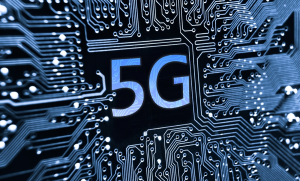5G PCB Design Challenges and Solving Signal Transmission Integrity
Since the significant commercial breakthroughs of 5G technology in 2019, numerous countries have launched their 5G networks. These developments have had a profound impact on the field of communications. Alongside the adoption of Active Antenna Unit (AAU) technology, which incorporates highly integrated RF modules in base station construction, the utilization of the mmWave frequency band has emerged as a pivotal aspect. This frequency band offers greater bandwidth and faster data transmission speeds, making it a key enabler of 5G networks. To effectively support these frequency bands, more sophisticated antenna systems and 5G PCB have become indispensable. In this article, Fubon Precision Electronics will delve into the world of 5G-integrated circuit boards and provide a comprehensive set of design guidelines to assist your project.

Designing PCBs for 5G technology presents unique challenges, particularly when it comes to ensuring signal transmission integrity. Here are some common challenges and potential solutions to address signal transmission integrity in 5G PCB design:
High-Frequency Signal Loss:
Challenge: High-frequency signals in 5G are susceptible to increased losses due to skin effect and dielectric losses.
Solution: Choose low-loss materials with a stable dielectric constant, such as high-frequency laminates. Carefully design transmission lines with controlled impedance to minimize signal loss.
Signal Reflections:
Challenge: Signal reflections can occur at discontinuities or impedance mismatches, leading to degradation of signal integrity.
Solution: Implement impedance matching techniques and maintain consistent impedance along transmission lines. Use tools like impedance calculators and simulation software to optimize matching networks.
Crosstalk:
Challenge: High-frequency signals may result in crosstalk between adjacent traces, leading to interference.
Solution: Increase spacing between traces, use shielded traces, and employ ground planes between signal layers to reduce crosstalk. Properly design the stackup to minimize electromagnetic coupling.
Antenna Integration:
Challenge: Efficient integration of antennas into the PCB design for optimal signal transmission and reception.
Solution: Collaborate with antenna design specialists to choose and integrate suitable antennas. Use advanced techniques like phased array antennas to enhance performance.
Thermal Considerations:
Challenge: Increased data transfer rates in 5G devices may lead to higher power consumption and heat generation.
Solution: Implement effective thermal management strategies, such as adding thermal vias, heat sinks, and optimizing the layout to dissipate heat efficiently. Ensure that high-power components are adequately cooled.
Power Integrity Issues:
Challenge: Power noise and fluctuations can impact signal integrity, especially in RF components.
Solution: Design a clean power distribution network using decoupling capacitors strategically placed near high-power components. Minimize power plane splits to maintain a low-inductance path for power delivery.
Manufacturability Challenges:
Challenge: Complex designs and high-frequency requirements may pose challenges during manufacturing.
Solution: Work closely with manufacturers to ensure that the design is manufacturable. Optimize the design for ease of assembly, considering factors such as component placement, soldering techniques, and testing procedures.
EMI/EMC Compliance:
Challenge: Meeting electromagnetic interference (EMI) and electromagnetic compatibility (EMC) standards is crucial for signal transmission integrity.
Solution: Incorporate EMI/EMC mitigation techniques, such as shielding, filtering, and proper grounding. Conduct rigorous testing to ensure compliance with regulatory standards.
Simulation and Modeling:
Challenge: Complex high-frequency behaviors may be challenging to predict accurately without simulation tools.
Solution: Utilize advanced simulation and modeling tools to analyze the performance of the PCB design. This allows for the identification and resolution of potential signal integrity issues before physical prototypes are built.
In 5G PCB design, conducting a thorough post-design review is paramount. This involves scrutinizing the closed and open loops of traces to eliminate potential loop antennas. Additionally, it is crucial to verify the proximity of decoupling capacitors to the power supply pins while minimizing the area enclosed by power and ground traces.
